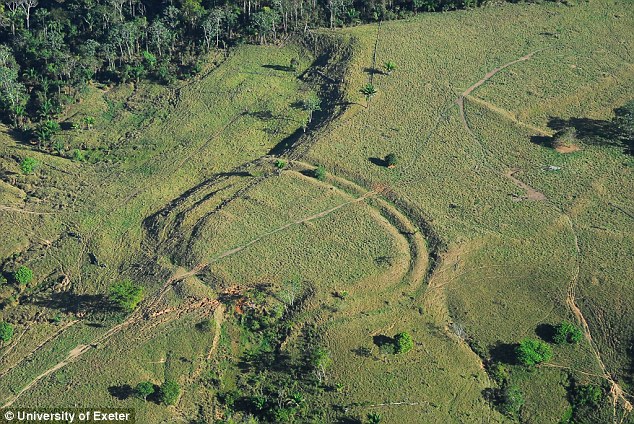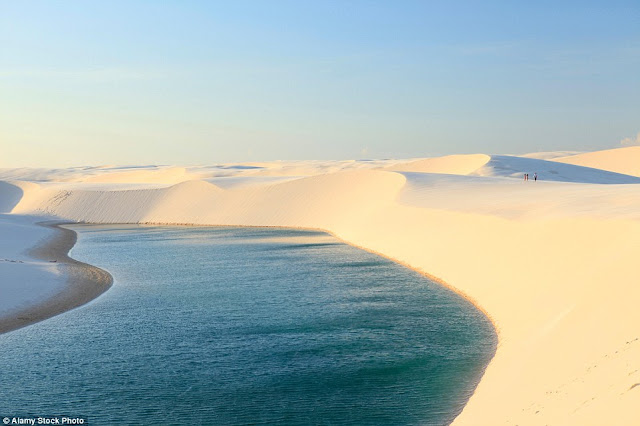The true treasure lies in discovering who or what created these tunnels. In 2009, a farmer in the south of Brazil was driving through his corn field when he felt his tractor suddenly sink and lurch to one side, making the vehicle shudder to a halt. When researchers arrived to investigate, they were shocked to find a tunnel running across the field and directly under the farmer's house, with deep claw marks embedded into the walls indicating its previous occupant was not human. A geologist and one of the scientists who visited the farmer's property concluded was the work of a giant ground.
A compendium of interesting places, hidden wonders, Beautiful Places, strange travel destination, tourist attractions.
Wednesday, 13 December 2023
Saturday, 6 June 2020
Brazil High Rise Vertical Cemetery
Do you know, there is the only city in the world with a 32-story cemetery, what is the real story behind
this unique work? The world's population is growing rapidly. Not only is there
a shortage of housing for the living, but it is also becoming increasingly
difficult to find a suitable eternal resting place after death.
The number of deaths in the
world is also increasing rapidly and it is time that there is no place to bury
in the cemetery. Peoples look the best place to bury their beloved ones.
However, finding space is really difficult in some of the world cities.
These days, high-rise
cemeteries are becoming rapidly popular around the world, and the Memorial
Necrópole Ecumênica, in Santos, Brazil, is the highest of them all. In some
societies, corpses are cremated and buried, while in the divine religions the
dead are buried. Graves and land are dwindling due to population growth.
To overcome this problem,
in some countries the practice of making cemeteries in the form of buildings
instead of ground cemeteries is on the rise. Due to the availability of land
for graves and the proportion of the population, construction of a high-rise
building began in 1983 in the Brazilian city of Santos, which has now become
the tallest cemetery in the world and is listed in the Guinness World Records.
This beautiful 32-story building at the foot of a mountain is 108 meters high. The building name is
Memorial Necropolis Echomanica. It also has a beautiful lawn, parking lot, a
church, a garden, a waterfall, and a restaurant. There are several blocks on 32
floors and each block has 150 tombs.
In addition, there are six
tombs in each storey. This lofty cemetery can accommodate 25,000 corpses at a
time. Here the bodies are kept on rent for three years and after three years
the remains are handed over to the heirs so that they can be buried or disposed
of elsewhere. There are proper ventilation arrangements to keep the graves
cool.
Moreover, the interesting fact is that the higher the tomb, the higher the price? The building has become a major tourist attraction in Brazil and millions of tourists come here to see the sights. However, the burial of corpses is becoming a serious problem for the living people living in the world because the world is just a cabin and we have to go to our final resting place anywhere. Death is inevitable, it is a hard fact of life to accept it, no matter it is easy or uncomfortable. Every human has to embrace death one day.
Product You May Interested
- Feel Emotional Freedom! Release Stress, Heal Your Heart, Master Your Mind
- 28 Day Keto Challenge
- Get Your Customs Keto Diet Plan
- A fascinating approach to wipe out anxiety disorders and cure in just weeks, to become Anxiety free, relaxed, and happy.
- Flavor Pairing Ritual Supercharges Women’s Metabolisms
- The best Keto Diet Program
- Boost Your Energy, Immune System, Sexual Function, Strength & Athletic Performance
- Find Luxury & Designer Goods, Handbags & Clothes at or Below Wholesale
- Unlock your Hip Flexors, Gives you More Strength, Better Health, and All-Day Energy.
- Cat Spraying No More – How to Stop Your Cat from Peeing Outside the Litter Box – Permanently.
- Anti-aging nutritional unexplained weight gain, stubborn belly fat, and metabolic slowdown. Reach Your Desired Weight in a Week and Stay There.
- Get All Your Healthy Superfoods In One Drink.
Thursday, 29 November 2018
4,000-year-old Termite Mounds Found Equal to the Size of Great Britain
Tuesday, 28 March 2017
Mount Roraima, Oldest Geological Formations on Earth
Thursday, 9 February 2017
The Mysterious Stone Structure of Amazon Rainforest
Tuesday, 1 March 2016
Snake Island: That You’ll Never Visit
Moreover, the word “Queimada” means to slash and burn because when locals attempted to clear land for a banana plantation on the island, they had to clear rainforest using this technique. Queimada Grande is home to hundreds of thousands of golden lanceheads, normally grows to be about two to four feet long is poisonous, extremely very, very poisonous. An automated lighthouse was built in 1909 in order to ships steer away from island. Due to excess number of snakes and toxicity of their venom, the Island was closed for public in order to safe people life by Brazilian Navy. Only researchers are allowed to enter the island to get research data. The scariest chemical analysis of golden lancehead venom advises that the snake is much more hazardous than its continental cousins: “golden lancehead viper” venom is faster acting and more powerful maybe five times more powerful.
The golden lancehead (Bothrops insularis) is the species of snake which gives the island its unofficial name, is the only home of the critically endangered, venomous golden lancehead pit viper, which has a diet of birds. When the sea level rise, the snakes becomes trapped at the mainland covered up the land, result in drop the population to about 2100. However, last year (2015) an estimate by a herpetologist on Discovery Channel documentary states that the population falls in 2000 to 4000 golden lanceheads. Hence, low population of Golden Lancehead list in label of critically endangered on the IUCN Red list of Threatened Species, and also in the list of Brazilian endangered animals. Moreover “Bothrops insularis” is also at risk from inbreeding, effects of which are evident in the population. Hence, it is estimated that island live between 1 to 5 snakes per square meter, is also home to many migratory birds use as a resting point.
A biologist Marcelo Duarte, has visited the Snake Island more than 20 times, says that the local negate the fact of one to five snakes per square meter, a clearly exaggeration at least not by us. It is easily observe one snake per square meter is more like it. Therefore, you’re never more than three feet away from death. According to different stories, this is perhaps the land of long buried pirate treasure, or even aliens island. The only prominent feature of Snake Island may be the perfect place for an anti-cancer drug, or anti-aging medicines. Moreover there are blue locusts and a lot of these weird, prehistoric-looking cockroaches on the ground at night that it crunches when walk. This is extremely scariest place in the world and no one is recommended don’t ever go.

















































